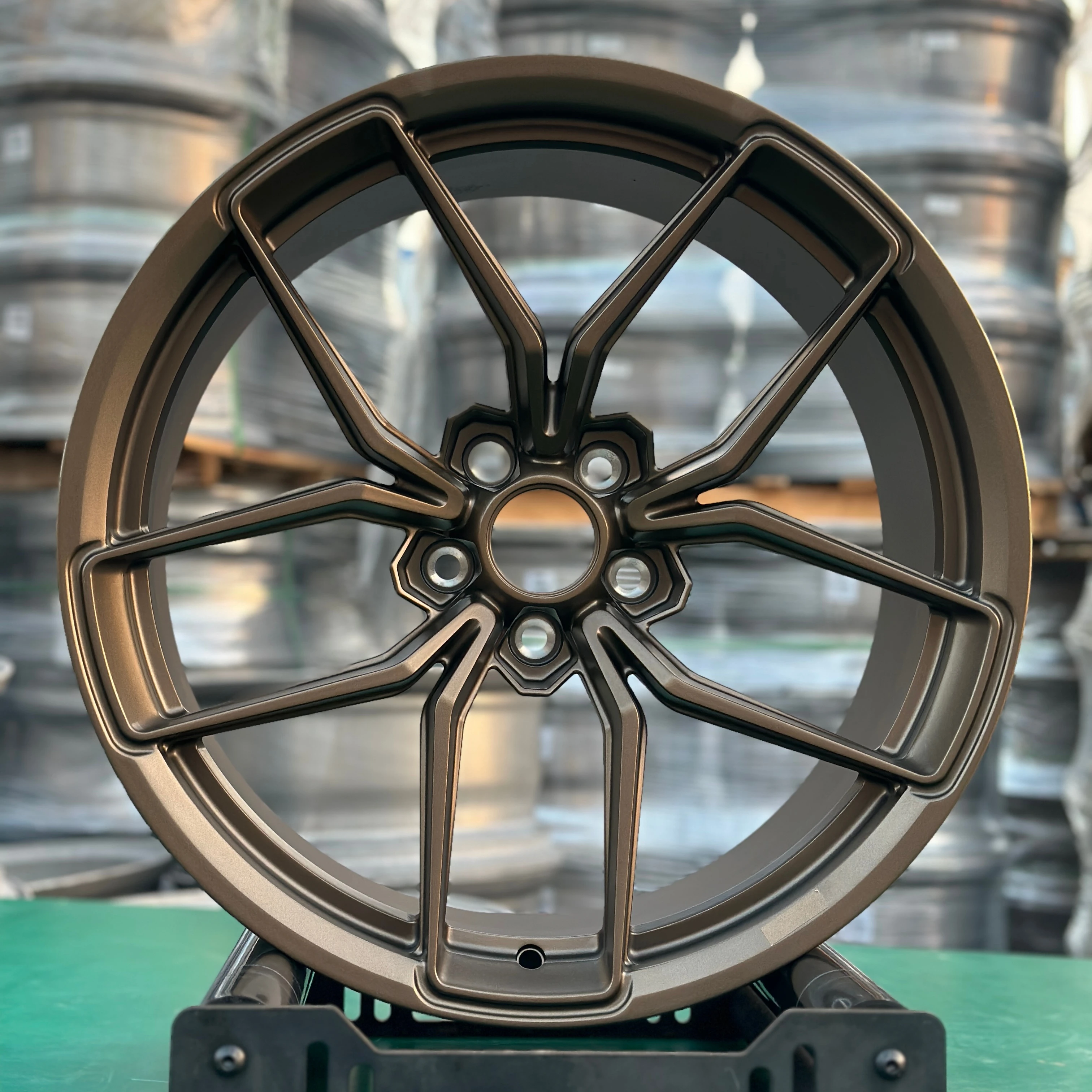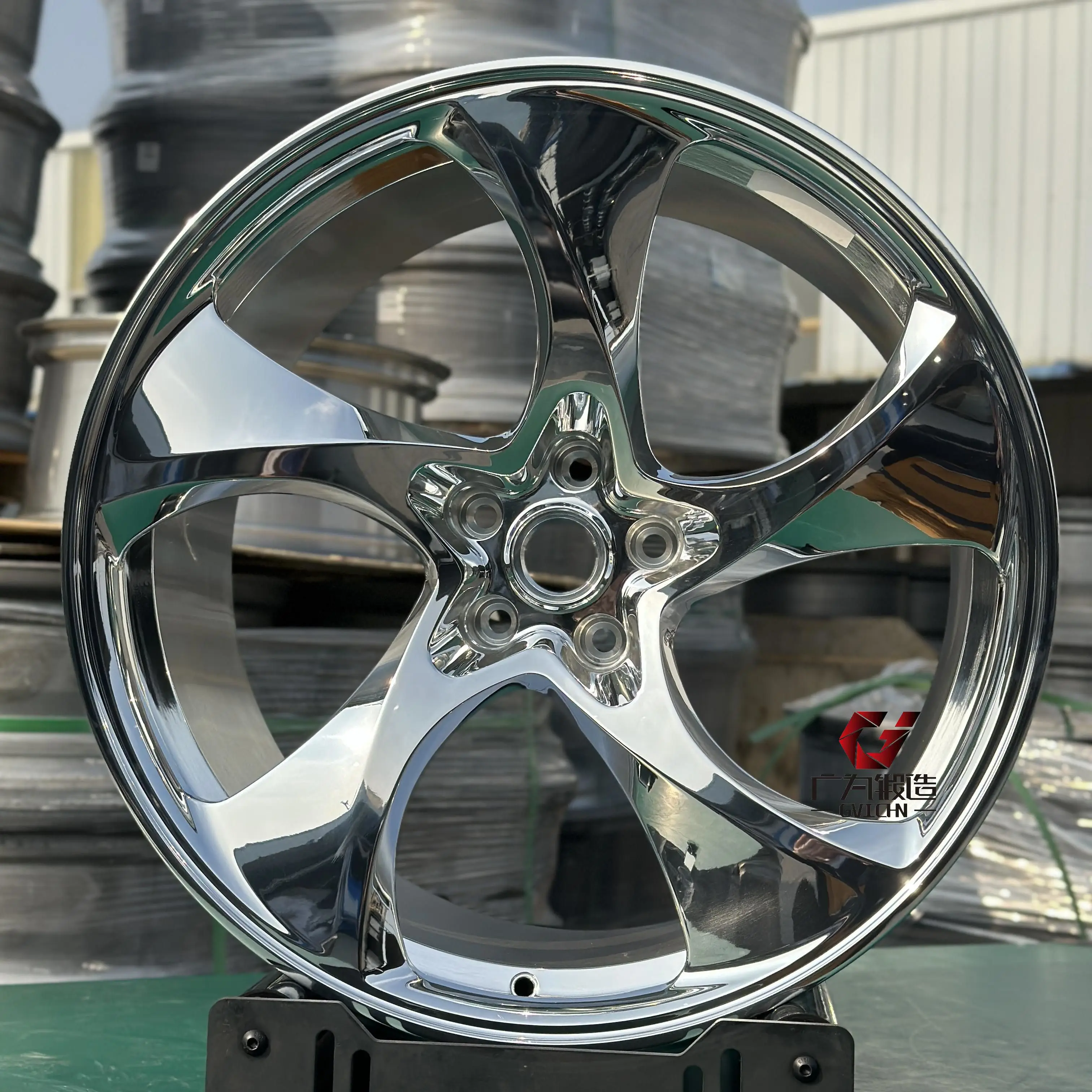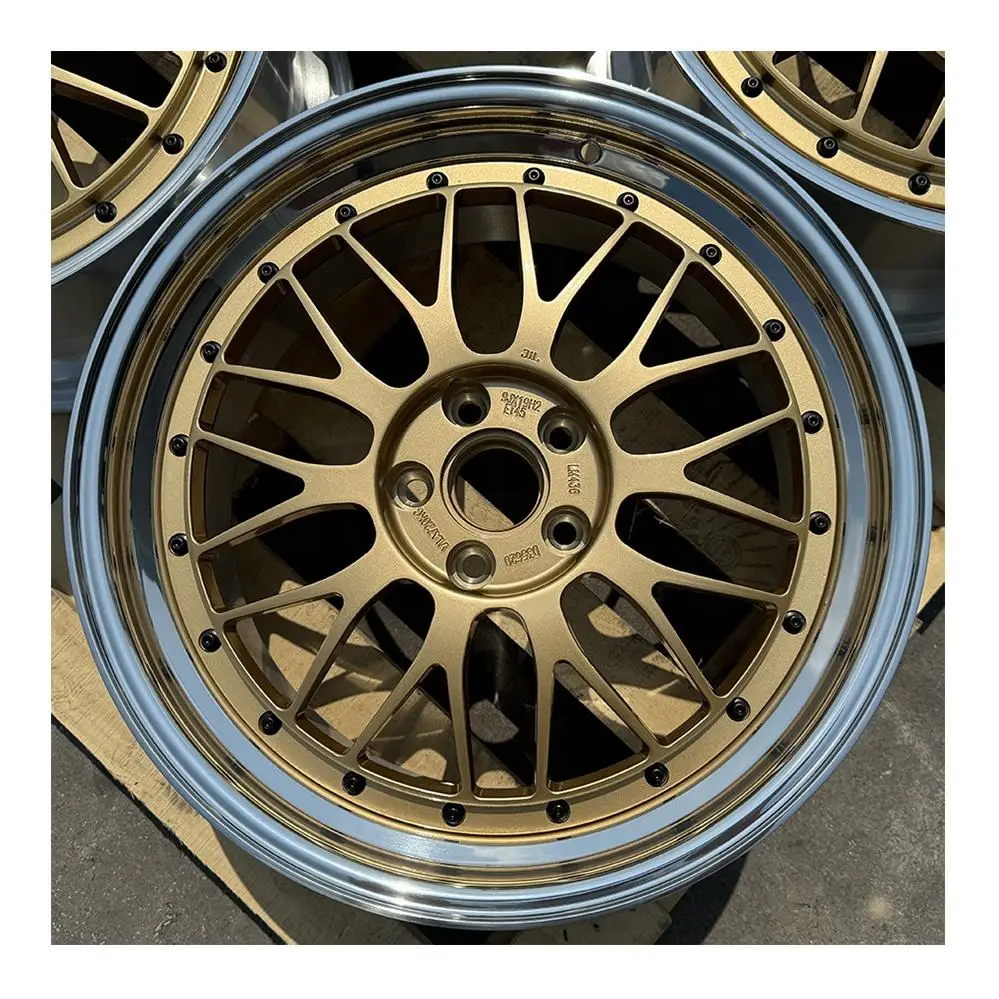The Evolution of Alloy Wheels in Modern Automotive Design
The Dawn of Automotive Alloy Wheels: 1920s-1960s
Bugatti's Pioneering Cast Aluminium Design (1924)
The year was 1924 when Bugatti changed how cars handled on the track with something never seen before - cast aluminum wheels installed on their Type 35 race car. What made this so special? Well, those wheels cut down what we call unsprung weight, which basically means the parts hanging off the suspension system. And guess what happened next? The car handled better, felt more responsive during races, giving drivers an edge they hadn't had before. When the wheels lost less mass while moving, everything got faster too - acceleration picked up, brakes worked smarter, corners were taken at higher speeds without losing control. Other car makers took notice of what Bugatti did here. They started looking into their own versions of lightweight components after seeing how much difference these aluminum wheels made. Looking back now, this wasn't just another improvement but actually marked a turning point in building fast machines that could perform consistently under pressure.
Early Innovations: Integrated Brake Drums & Weight Reduction
Around 1928 to 1932, when automakers started putting brake drums right into the wheel assemblies themselves, cars got noticeably lighter across the board. The change made a real difference in how fast they could speed up and stop, something that mattered a lot for sports cars and racing models back then. Engineers basically merged these components together so they didn't have separate parts sticking out everywhere. This wasn't just about saving weight though it actually improved overall handling too while keeping everything safe enough for regular road use. These kinds of mechanical improvements showed that car makers were getting serious about making their products faster and more efficient long before anyone thought about modern supercars. What started as simple weight savings became part of a bigger trend toward building machines that pushed harder against what was possible at the time.
Cadillac Sabre-Spoke: Post-War Alloy Luxury (1954)
When Cadillac introduced the Sabre-Spoke wheel back in 1954, it really marked something special in the world of alloy wheels. These were among the earliest alloy wheels made after World War II, mixing looks with strength that could handle real road conditions. The wealthy car owners loved them because they wanted something both beautiful and built to last. With an aluminum center that had this cool design and those shiny chrome fins sticking out, these wheels caught everyone's eye who cared about how their cars looked on the outside. People started caring just as much about what their cars looked like as how well they worked under the hood, which was pretty different from before. The Sabre-Spoke wheels basically changed what people expected from their vehicle parts.
European Leadership: Abarth, OSCA & Ferrari Adopt Light Alloys
In the late 1950s, automotive pioneers such as Abarth, OSCA, and Ferrari started making waves when they introduced lightweight alloys into their vehicle designs. These changes had a real impact on how fast cars could go and handle corners during races. Lighter alloy wheels meant faster acceleration and better control around tracks, which is exactly what racers needed back then. For these luxury brands, this wasn't just about looking good it actually made their cars perform better too. The fact that these companies were among the first to experiment with such materials really boosted their image in the market while showing everyone else just how much difference lighter components could make. Over time, alloy wheels became something almost expected in serious sports cars, marking them as symbols of cutting edge engineering rather than just fancy decorations.
Mid-Century Developments & Performance Adoption: 1950s-1970s
Pontiac's Integrated Drum & Rim Design (1960)
Pontiac made waves in 1960 when they rolled out their integrated drum and rim design for wheels, marking a major shift in automotive engineering. The clever integration cut down on rotational weight significantly, which meant cars handled better and got better gas mileage too. When Pontiac merged those components into one unit, they weren't just making things look cleaner under the hood. Real drivers noticed improvements right away. Other car makers took notice as well. Within a few years, several competitors started copying aspects of this design, showing just how impactful Pontiac's approach turned out to be for the whole industry during that era.
Shelby Mustang & Corvette Enter the Arena
In the 1960s, legendary cars such as the Shelby Mustang and Chevrolet Corvette first hit the roads with alloy wheels becoming a major part of what made them stand out on performance front. These models really showed people how closely linked alloy wheels were to powerful cars, changing what buyers looked for when shopping for their dream machines. When manufacturers started putting alloy wheels on these performance beasts, it wasn't just about looks anymore. The actual driving experience improved too, with better handling and weight distribution. As a result, regular folks began demanding alloy wheels even on their everyday drivers. What started as a niche feature for racing enthusiasts gradually became standard equipment across the board for anyone wanting something that could truly perform on the track or street.
Japanese Debut: Toyota 2000GT Magnesium Center-Lock
When Toyota launched the 2000GT back in 1967, it signaled Japan was serious about making waves in cutting edge wheel tech. The car came equipped with those cool magnesium center lock wheels that were pretty ahead of their time. These special wheels showed off what happened when makers started thinking outside the steel box regarding weight savings and better handling characteristics. What made the 2000GT so impressive wasn't just its looks either. Japanese automakers proved they had real engineering chops through this model, which helped shift attention toward technical excellence rather than just style points in the auto world. Lightweight materials suddenly looked like a smart move, and soon enough everyone was watching what Japan could do next with performance cars.
Iconic Designs Emerge: Porsche Fuchs & Mercedes Bundt Cake
When the Porsche Fuchs and Mercedes Bundt Cake wheels hit the scene in the late 70s, they really marked the height of what engineers could achieve when combining looks with function. People loved how they looked, sure, but there was serious thinking behind them too. The designs actually helped cars handle better because they spread weight just right and cut through air more efficiently. These wheels weren't just for showrooms either. Their impact rippled out across all sorts of industries where form meets function matters. Take a look at any high performance equipment today and chances are good those old school wheel principles still play a role somewhere. After all, nobody wants something that looks great but falls apart under pressure.
Widespread Motorsport Use: Halibrand & Minilite Dominance
Halibrand and Minilite wheels became big names in racing circles during the sixties and seventies. These wheels were made from lightweight alloys which gave race cars better speed and handling on the track. When racers started using them all over the place in competitions, it showed just how far alloy wheel tech had come. Motorsport teams quickly realized these wheels weren't just good they were essential for serious performance work. Looking back now, we can see how much of an impact these wheels actually had on shaping what modern racing looks like today.
Key Technological Milestones Driving Evolution
Material Science: From Aluminum Casting to Magnesium & Advanced Alloys
The field of material science has really pushed forward how we make car wheels, moving away from standard aluminum toward magnesium and various advanced alloys. The main benefit here is getting better strength while keeping weight down, something that makes cars handle better and perform more efficiently overall. Take magnesium alloys for instance they're getting a lot of buzz lately because they're so light yet strong enough to hold up under stress, which means vehicles consume less fuel and drive nicer on the road. Automakers are now investing heavily in new manufacturing methods rather than sticking with old school casting techniques, which explains why we're seeing more of these lighter materials show up in production models across different segments of the market.
Manufacturing Breakthroughs: Forging vs. Casting Precision
The big question in alloy wheel manufacturing these days is whether to go with forged or cast wheels, and it really comes down to what matters most: exact measurements or raw toughness. Forged wheels get all the hype because they can handle serious punishment without breaking a sweat, which is why they show up so often on race cars and high-end sports vehicles. More shops are starting to stock forged options as customers ask for better handling and longer lasting products, even if they cost extra upfront. What we're seeing now is an ongoing tug-of-war between getting those razor sharp details right during production while still making sure the wheels can take whatever abuse comes their way on real roads.
Space-Age Influence: Material Innovations from Lunar & Mars Rovers
The tech used in those lunar and Mars rovers has actually made a big difference in how we make car alloy wheels these days. Think about it space grade materials were originally built to handle brutal temperatures and radiation out there in the cosmos, but now they're showing up in our vehicles too. Companies have started using some of these super tough alloys because they last longer and perform better under stress. What's interesting is how ideas from outer space keep finding their way into regular cars. When auto manufacturers talk to aerospace engineers, good things happen. We see lighter wheels that can take punishment without cracking, all thanks to this unexpected partnership between industries working toward similar goals.
Optimizing Performance: Heat Dissipation & Stiffness Improvements
Recent engineering advances have really boosted how well alloy wheels handle heat and maintain their structural integrity. This matters a lot when vehicles push their limits during track days or regular high performance driving scenarios. Research shows better heat management does two main things: it makes brakes work more effectively and keeps tires from wearing out so fast. For anyone serious about getting the most out of their car's performance, these improvements aren't just nice to have they're practically essential for keeping everything running smoothly under stress.
Combating Corrosion: Advancements in Coatings & Treatments
Corrosion resistance is now pretty much essential when designing alloy wheels these days, thanks to all sorts of new coating technologies hitting the market. Wheels treated with these protection layers last much longer than before, plus they keep looking good even after years on the road. According to recent studies from automotive labs, the newer chemical coatings really outperform old school methods at stopping rust formation. Car manufacturers are seeing this trend firsthand as consumers increasingly want wheels that both stand up to harsh weather conditions and maintain their shiny appearance throughout ownership.
Alloy Wheels in the Modern Automotive Landscape
Fuel Efficiency & Sustainability: The Critical Weight Advantage
Alloy wheels these days are making a real difference when it comes to getting better gas mileage simply because they cut down on overall vehicle weight, which fits right into the worldwide push for greener transportation. Take away around 10 percent of a car's weight and drivers typically see somewhere between 5 to 7 percent better fuel economy. That math makes sense for anyone looking at their tank costs. With governments cracking down harder on emissions standards all over the place, car makers have been focusing more on creating lighter wheel options from alloys. This focus isn't just about meeting rules though. Automakers know consumers care about saving money at the pump while also wanting vehicles that don't pollute so much. The whole industry seems to be moving toward this balance of performance and planet friendliness in pretty much everything they build now.
Design Freedom: Aesthetics as a Primary Styling Element
Alloy wheels bring something special to the table when it comes to looking good on cars. People want their vehicles to stand out these days, so manufacturers have really ramped up focus on how wheels look. After all, who doesn't notice shiny new rims on a car? We're seeing all sorts of wild designs hitting showrooms now - from bold spoke patterns to matte finishes that catch light differently. Car enthusiasts love this stuff because it lets them put their stamp on what they drive every day. And guess what? The market for custom wheels keeps growing faster than anyone expected. For automotive designers working behind the scenes, this means constant pressure to come up with fresh ideas while still meeting practical requirements like weight and durability.
Integration with Advanced Braking & Electric Vehicle Systems
As automotive tech keeps evolving, today's alloy wheels need to play nice with complex braking systems, especially in electric cars. EVs place extra stress on parts because they have different performance needs compared to traditional vehicles. Heat management becomes critical, along with keeping things light without sacrificing strength. Car manufacturers respond by creating wheels tailored for these specific challenges. They want those alloy wheels to fit right into the sophisticated setups of modern electric vehicles. The goal is simple really: make sure the wheels hold up under intense conditions while still delivering safe, efficient performance on the road.
Future Trends: Smart Wheels & Sustainable Material Innovation
What lies ahead for alloy wheels? Smart tech and eco-friendly materials will definitely play a big role in shaping their evolution. We're already seeing intelligent monitoring systems becoming common features on many models today. These systems give drivers instant feedback on things like temperature, pressure changes, and even road conditions while they drive, helping them make better decisions behind the wheel. At the same time, car makers are increasingly turning to recycled aluminum and plant-based composites for production. Some companies have made significant commitments to reducing waste in their manufacturing processes. As both green initiatives and digital enhancements gain ground, it seems clear that alloy wheels won't just look different in coming years but function in ways we haven't seen before either.
Recommended Products
 Hot News
Hot News
-
Forged Carbon Products
2024-05-21
-
Forged Off-Road Accessories
2024-05-21
-
GVICHN Introduces Revolutionary Forged Two-Piece Product
2024-05-21







 ONLINE
ONLINE